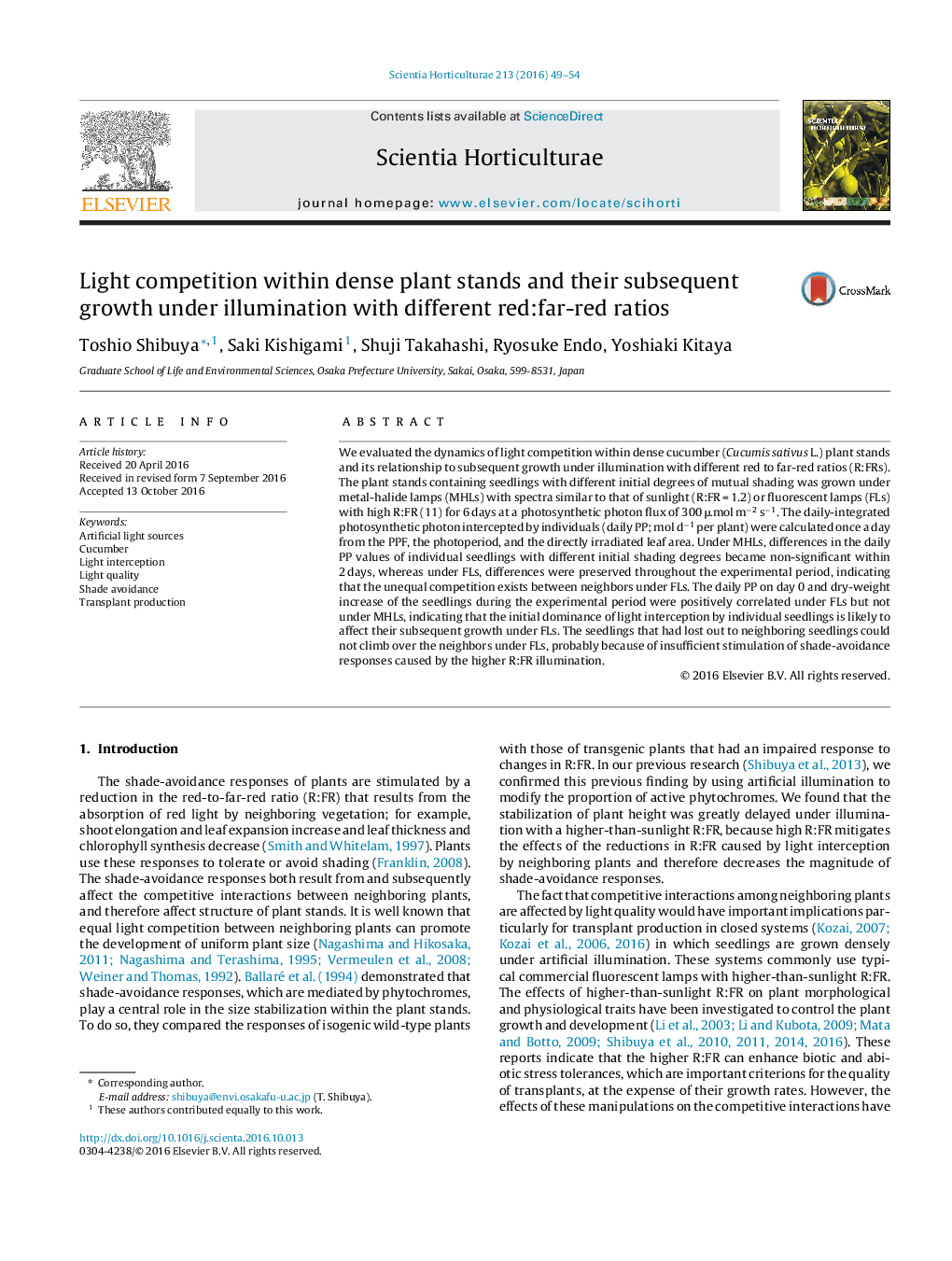| Article ID | Journal | Published Year | Pages | File Type |
|---|---|---|---|---|
| 4565883 | Scientia Horticulturae | 2016 | 6 Pages |
•The cucumber plant stands were grown under different red to far-red ratios (R:FRs).•Under R:FR of 1.2, the plant stands competed with each other on an equal basis.•But, the unequal competition exists between neighbors under R:FR of 10.•This unequal competition persisted and thereby caused ununiformity of growth.
We evaluated the dynamics of light competition within dense cucumber (Cucumis sativus L.) plant stands and its relationship to subsequent growth under illumination with different red to far-red ratios (R:FRs). The plant stands containing seedlings with different initial degrees of mutual shading was grown under metal-halide lamps (MHLs) with spectra similar to that of sunlight (R:FR = 1.2) or fluorescent lamps (FLs) with high R:FR (11) for 6 days at a photosynthetic photon flux of 300 μmol m−2 s−1. The daily-integrated photosynthetic photon intercepted by individuals (daily PP; mol d−1 per plant) were calculated once a day from the PPF, the photoperiod, and the directly irradiated leaf area. Under MHLs, differences in the daily PP values of individual seedlings with different initial shading degrees became non-significant within 2 days, whereas under FLs, differences were preserved throughout the experimental period, indicating that the unequal competition exists between neighbors under FLs. The daily PP on day 0 and dry-weight increase of the seedlings during the experimental period were positively correlated under FLs but not under MHLs, indicating that the initial dominance of light interception by individual seedlings is likely to affect their subsequent growth under FLs. The seedlings that had lost out to neighboring seedlings could not climb over the neighbors under FLs, probably because of insufficient stimulation of shade-avoidance responses caused by the higher R:FR illumination.
